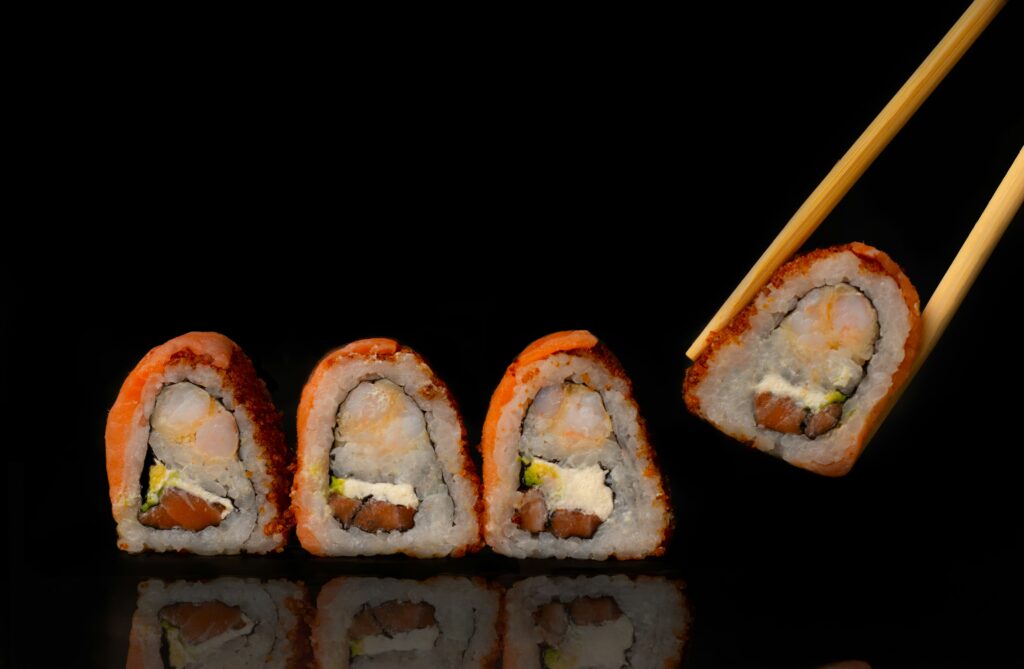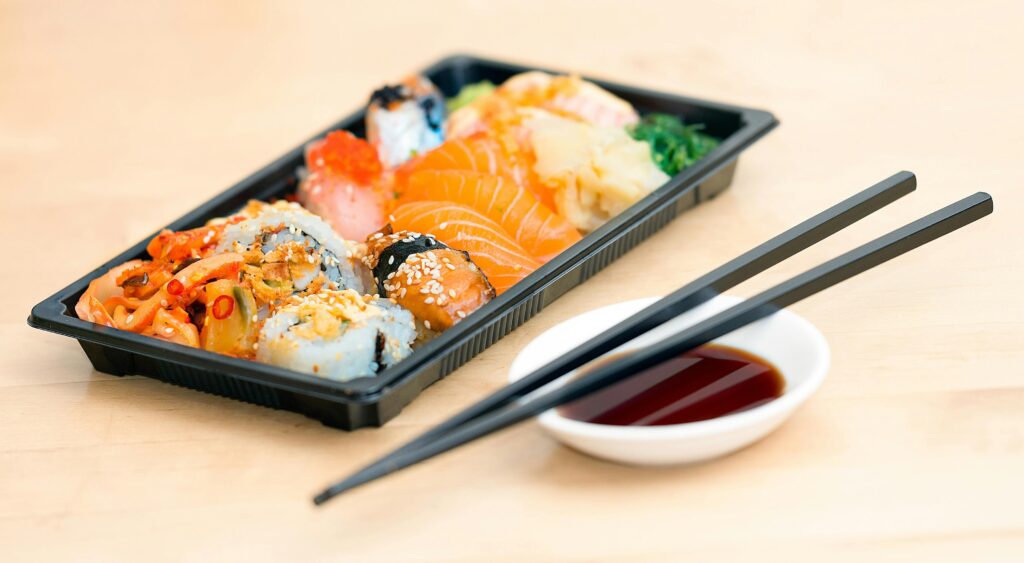Introduction to Sushi Culture
Sushi
Sushi is also not merely a meal, but a cultural phenomenon that has been embedded in the Japanese gastronomic system. It consists of a fine balance of vinegared rice, frequently accompanied by cooked or raw seafood, vegetables, and occasionally tropical fruits. But Sushi is more than its ingredients, Sushi is harmony, Sushi is also simple, and Sushi is about presentation.
History of Sushi
Sushi originated in the ancient period of Japan, and it originated as a serving system that was referred to as narezushi. Fish was preserved in fermented rice so that they would not spoil for months.
The rice was incorporated into the dish as edible over the years to give us the Sushi that we consume today. By the Edo period (16031868), fast, fresh bites in the form of sushi stalls were already being offered in the streets of Tokyo.
Sushi Became So Popular Worldwide
The late 20th century saw the rise of Sushi around the world, both in popularity and health concerns, beauty appeal, and especially unique tastes. Sushi bars proved to be the hippest spots to hang out in both Los Angeles and London, and before long, the never-enough-risen all-you-can-eat concept swept in to take Sushi to a whole new demographic.

Understanding All You Can Eat Sushi
What Does All You Can Eat Mean in Sushi Restaurants?
At an all-you-can-eat buffet, guests are charged a fixed price to order unlimited Sushi from the menu within a specific time frame. Unlike buffets, the Sushi is freshly prepared to order, ensuring a high-quality dining experience.
Differs from Traditional Sushi Dining
The traditional way of eating sushi tends to create a focus on tasting one or two of specifically made bites. Variety and bulk are invited by A. It is more like a lesson in biting off as many rolls, Nigiri and appeizers as I can in one bowl.
The Rise of Sushi in the West
North America started picking up Sushi in the 1990s. Cheap, entertaining, and group-friendly, it quickly took over cities in the United States and beyond to Europe.
All You Can Eat Sushi for Beginners
- Stick to things like California rolls, shrimp tempura rolls, or vegetable rolls to get introduced to sushi tastes.
- Once you have acclimatized, make the next step: salmon or tuna Nigiri, something that will get you ready to handle raw fish.
- You can visit the local sushi locale to taste raw fish such as salmon or yellowtail in thin slices.
- Despite this, too much should not be ordered; order a few items so that there can be variety without much wastage of food.
- Combine the lighter cucumber rolls and sashimi with heavier specialty rolls.
- Use only enough soy sauce to dip lightly, and the wasabi should be used to accent balance but not to mask the taste.
- Water instead of soda so that there is not too much filling.
- The servers can direct you to easy rolls, novice rolls, and house specialties.
- Eat slowly, feel the taste and the texture.
- When you are just coming up to feel uncomfortable, full stop; you want to see, not stuff your face.
Types of Sushi that You Can Find in the All you Can Eat restaurants
Nigiri Sushi
Nigiri is composed of pieces of either cooked or raw fish on top of pressed rice. Salmon, tuna, and eel are bread and butter.
Maki Rolls
They are rice and fillings wrapped in seaweed. There may be hundreds of them–menus packed with hundreds of items that range from simply cucumber rolls to magnificent dragon rolls.
Sashimi
Raw fish, thinly sliced, without rice. The preferred options are tuna, salmon, and yellowtail.
Specialty Rolls
The Sushi is something exciting, with creative chef-inspired rolls being laden with sauces, tempura, and toppings.
Vegetarian and Vegan Sushi
Avocado rolls, tofu nigiri, and other varieties of plant-based sushi have found their niche on menus.
The All You Can Eat Sushi Experience
- Fixed Price: Dining You pay a certain price ($20-40 avg) and get as much Sushi as you can per time (usually 90-120 minutes).
- Made to Order: At the majority of sushi restaurants, food is made once you order, and therefore, it is fresh.
- Large Selection: Menus contain sushi rolls, Nigiri, Sushi, and sashimi, appetizers, and sometimes desserts.
- Ordering by Rounds: Customers put in their orders a couple of things at a time, and they are brought out in batches.
- No Sharing: With Diners. To make the deal even, many restaurants have rules that stop sharing.
- Leftovers: Leftover food that is not finished can generate additional costs as a disincentive to wasteful action.
- Social and fun: Ideal enough when it comes to groups of friends or even family members sharing and trying different roles together.
- Balance and Strategy: The reason is that Smart diners eat slowly, never stuff themselves with rice-based rolls, and begin by having lighter dishes such as sashimi.
- Bang-per-buck: The subsets are frequently cheaper than ordering rolls individually, and can be particularly economical when attained by large eaters.
- Mindful Eating: It is an experience where one should enjoy all the diversities without overconsumption and wastage.
Top Ways of Having an Excellent Experience with All You Can Eat Sushi

Start Light the Right Order of Eating
I would recommend starting tiny, with sashimi or cucumber rolls, and then moving to fried/saucy rolls.
Fillers Meals
Avoid heavy rice rolls and fried side dishes, and save as much money as you can.
Hydration Tips
Drink water but not too much soda–that makes you full quickly.
Managing your speed by not overindulging.
Slow down, relish the taste, and do not worry about winning.
Pros and Cons of Sushi
Advantages of Sushi
- Excellent sushi deal
- Lots of choices at a single sitting
- And great at gatherings and parties
Negatives and Dangers
- Possible food waste
- The lure of excessive eating
- Could not be as quality as fine dining sushi
Health Aspects of All You Can Eat Sushi
Sushi Nutrition Facts
Sushi, being a food composed mostly of lean protein, omega-3 fatty acids, and vitamins, is rich in nutrients. Nonetheless, one should not forget to take note of the risk involved in excessive intake of rice and sauces, which causes swelling and an excess of calories.
Dangers of Eating Sushi
Too much rice and sauces may cause bloating and overloading of calories.
Mercury and Raw Fish Disclaimer
Mercury is found in large fish such as tuna, hence moderation is prudent. Raw fish is something that pregnant women should always avoid.
All You Can Eat Sushi Around the World
United States
Sushi restaurants flourish in such cities as Los Angeles, Las Vegas, and New York.
Europe
The greatest sushi chains start thriving in London, Paris, and Berlin.
Asia
Other Asian nations, such as Japan, prize it, but this is not very common in Japan.
Australia and Beyond
Sushi is very lively in Sydney and Melbourne.
Sushi Etiquette 101
Chopstick Manners
Don’t click/chew-sound chopsticks. In Japan, it’s considered impolite.
The Proper Use of Soy Sauce and Wasabi
Don’t put rice into lumpy soy sauce, DIP FISH INSTEAD. Add just a little.
How to Eat Sushi the Japanese Way
Eat Nigiri in one bite whenever you can. It’s intended that way.
Fun Facts About Sushi
Sushi World Records
The heaviest sushi roll that was prepared boasted more than 6,500 pounds.
Pop Cultural Sushi
Sushi has become a world icon since it is featured in Japanese animations, as well as Hollywood films.
Sushi as a Work of Art
It can take years of training, honing knife skills, and presentation by the sushi chefs..
The Future of All You Can Eat Sushi
Sushi sustainability
Sustainable seafood practices are being taken by the restaurants to address the issues of overfishing.
The Fusion Sushi Trends
Creative Mexican and Korean rolls with some Middle Eastern influences should follow.
Technology within the Sushi Dining
Ordering systems are coming in with robotic sushi chefs.

Conclusion
All you can eat Sushi is not a meal option; it is an event, as it comprises the amalgamation of taste, culture, and fun.
As opposed to the traditional dining experience with Sushi, where it is advised only to enjoy a handful of pieces prepared carefully, Sushi has allowed people to experience a great range of rolls, Nigiri, sashimi, and specialty combinations at once.
It is one of the best options to get to know new tastes, experimenting with new combinations, and trying Sushi without considering the price of separate portions.
This mode of eating has made Sushi appear more easily accessible globally, either to newbies or to the veterans of sushi-lovers. Partying with friends, family lunch or dinner, or just treating yourself, Sushi is fun, social, and memorable.
Ultimately, all you can eat is not only an unlimited food buffet, but it is also the time to celebrate, connect, and the thrill of sharing the tasty morsels.
What Does Sushi Refer To? Sushi is written as all-you-can-eat Sushi. It is a food concept that uses a fixed price model, whereby the customer can eat as much of the prepared menu as possible to drink within a certain duration selected by the customer.
Sushi is a Japanese dish that consists of specially cooked rice and typically some fish or seafood, which is often raw but sometimes cooked. And even though the word sushi will automatically bring to your mind the idea of raw fish, it is the rice that is the main ingredient here.
Nevertheless, the word Sushi properly means rice flavored with sweetened vinegar and commonly topped/stuffed with all kinds of additions like seafood (raw and cooked), vegetables, etc. Neither is it to be confused with rice bowls (onigiri) that also contain rice and possibly seaweed as well.
Definition of all-you-can-eat in English. Used to refer to a meal at a restaurant where you can serve yourself as much food as you like: The bar has an all-you-can-eat lunch buffet for 10 dollars.
In particular, sushi types that are high in omega-3 are in the forms of lake trout, herring, tuna, and salmon. Lots of sushi rolls may be wrapped in a very thin sheet of seaweed, or nori in Japanese. Seaweed is rich in healthy minerals, particularly iodine.
Not only does it taste good, but it is filled with good stuff, too. Fish, salmon, and tuna are sources of fatty acids that are good for the brain and heart. Seaweeds, which are normal to eat in Sushi, contain vitamins and minerals.
